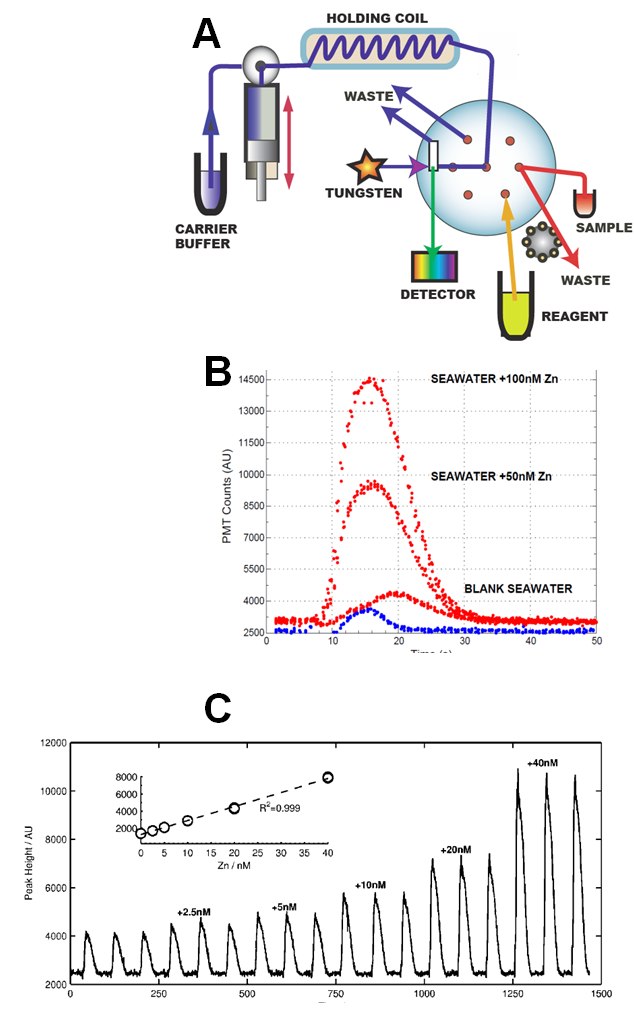This method uses single interface sequence comprising 50 microL of reagent and 75 microL of sample aspirated into the holding coil, followed by reversal that propelled the reaction mixture into and through the flow cell. The reaction rate between Zn(II) and FluoZin-3, is so fast that the equilibrium is reached already on the way to the detector. The optimum reaction conditions, (pH, reagent concentration) and sources of blank signal and physical parameters of the mSIA-LOV system (A), were optimized with goal of obtaining high sensitivity and low background signals. A detailed investigation of the effect of sample and reagent sequencing is presented, revealing for the first time that the single interface method influences peak shape (B) the highest and smoothest peaks being obtained when a large volume of sample (75 mL) is aspirated last in the sequence prior to flow reversal and detection. The optimized reaction conditions yield a detection limit of 0.3 nM Zn2+, high precision (RSD < 2.5%), a linear quantification range up to 40 nM (C). This detection limit is close to the one needed for assay of Zn2+ in open ocean yet it is performed without preconcentration or separation of Zn2+ from the seawater matrix. The low reagent consumption, automation and minimal maintenance are the features that make the method well suited for shipboard analysis.
Zn in Sea Water by Fluorescence Detection Using SI-LOV Platform
2.3.10.











